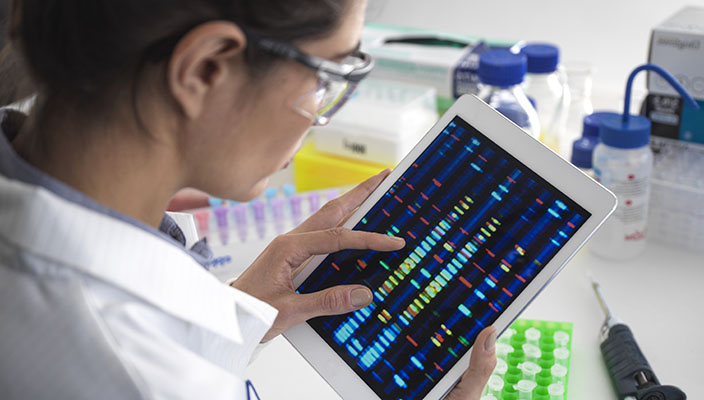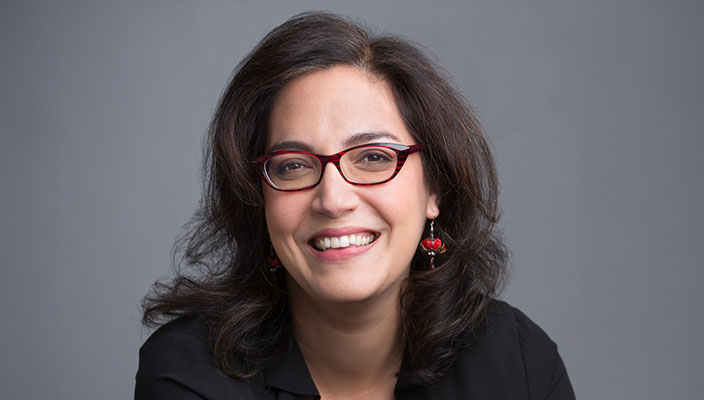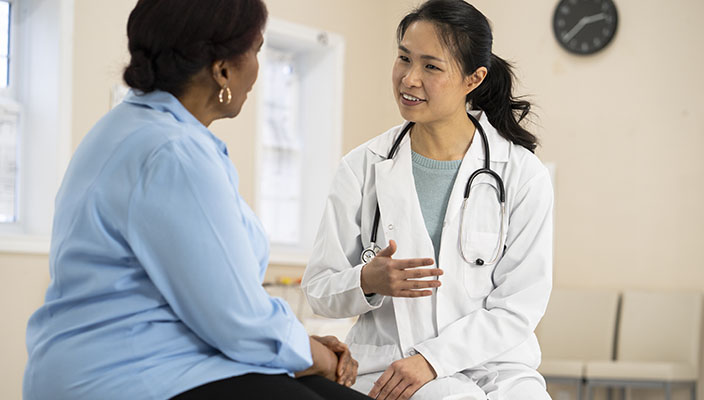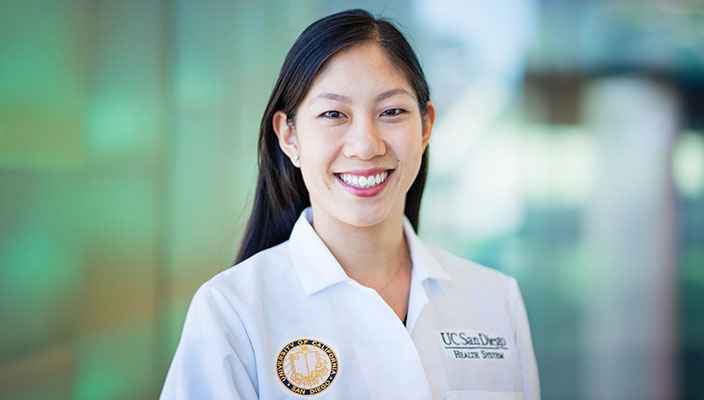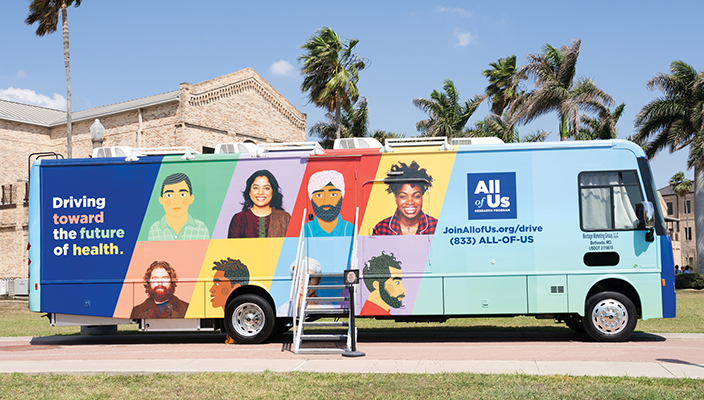Working at a mobile vision clinic opened Sally Liu Baxter’s eyes. It’s where she realized what she wanted to do with her life.
Dr. Baxter, M.D., MSc., is a physician–scientist and an All of Us collaborator. She’s also an assistant professor of ophthalmology at the University of California, San Diego (UCSD).
But back then, during her internship at the eye clinic, she was an undergrad at Duke University. Her internship took her to underserved communities in Southern California. The clinic (which was run by UCSD) gave vision screenings to children in pre-K through elementary school. Many didn’t have access to health care.
“Every day we were seeing kids who were … falling behind because of a basic need for glasses,” Dr. Baxter said. “They couldn’t see the blackboard or the front of the classroom.”
The mobile clinic made a big impact wherever it went. It had a big effect on Dr. Baxter too.
“[That work] made it real for me,” Dr. Baxter said. “There really wasn’t a level playing field. There was something tangible we could fix.”
The experience motivated her to study medicine, public health, and ophthalmology. Her focus was medical research and bioinformatics. It’s a field that uses computer science, math, physics, and biology to study eye diseases.
The Eyes Have It
Dr. Baxter’s research looks at risks for vision loss and glaucoma. Glaucoma is a leading cause of blindness in the United States. Nearly 3 million Americans have the disease. There are few early warning signs. But Dr. Baxter can analyze them and use them to predict risks.
The All of Us Researcher Workbench helps her, too. Dr. Baxter uses its huge dataset to predict who might develop advanced glaucoma. Those who do often require surgery.
Dr. Baxter has also used the database to study how high blood pressure, diabetes, and heart disease increase the risk for more serious glaucoma.
Dr. Baxter’s research earned her an NIH Director’s Early Independence Award in 2020.
One of her studies after that looked at electronic health record (EHR) data from more than 1,200 All of Us participants with glaucoma. Dr. Baxter used that data to train a computer to predict who would need eye surgery. The computer was right 80% to 99% of the time.
In 2021, Dr. Baxter’s paper was one of the first to be published using All of Us data.
“The power of numbers,” Dr. Baxter says, “is huge.”
Family History of Higher Education
Dr. Baxter comes from a long line of academics. Her relatives were among the first women in China to get college degrees. Dr. Baxter was the first in her family to become a practicing physician.
Her parents immigrated to the United States in the early 1980s. They were grad students finishing their engineering degrees. Dr. Baxter was born in rural Ohio in 1987. She spent her early years in Pennsylvania, then Indiana. She and her parents moved to San Diego just before eighth grade.
Her grandfather Guangfu Zhou was also a big influence. He lived with Dr. Baxter’s family for several years in the United States. In China, he was an English professor. He read Chinese poetry to Dr. Baxter when she was young. That’s how she grew to love languages. Today she speaks Mandarin and conversational Spanish.
Science camp was also a key influence. In high school, Dr. Baxter spent four weeks at the California State Summer School for Mathematics & Science. She worked on experiments there and studied with geneticist and neuroscientist Fred Gage. He works at the Salk Institute for Biological Studies and is famous for discovering stem cells in the adult human brain.
“I just knew him as the expert in my biology book in high school,” Dr. Baxter said. “Then I was in his lab studying with him.”
From that time on, Dr. Baxter was hooked on science. She was also sure of her career path.
Medicine and Marriage and Mentors
After she graduated from Duke she moved to London. She was pursuing a master’s degree in public health, as a Marshall Scholar. That’s where she met her future husband, Michael Baxter. He was a Rotary Scholar, also studying public health. They both had applied to medical school in the United States. Dr. Baxter completed her medical degree at the University of Pennsylvania, in Philadelphia. Her husband finished at Johns Hopkins School of Medicine, in Baltimore.
They married at Michael’s alma mater, the U.S. Naval Academy in Annapolis, Maryland. The couple had three children while completing their medical degrees and residencies. Dr. Baxter’s mother, Hong Dai, and her mother-in-law, Joan Baxter, both helped out.
Dr. Baxter completed her residency in ophthalmology and a fellowship in biomedical informatics at UCSD. She credits her supportive family and mentors.
Mentor Robert N. Weinreb, M.D., a chair and distinguished professor of ophthalmology at UCSD, continues to offer advice and support. He mentored Dr. Baxter throughout her residency, fellowship, and early years at UCSD. He told her not to take manuscript rejections personally. He also advised her to persist with grant proposals.
“He helped me build a sense of resiliency,” Dr. Baxter said.
Dr. Weinreb says Dr. Baxter’s passion for learning and growth impressed him. “She … tackles challenges head-on and always embraces opportunities to stretch beyond her comfort zone.”
Paying It Forward
Now Dr. Baxter is passing on the lessons she learned.
“I’m trying to pay it forward,” she said. She advises and helps dozens of early career researchers in her lab at UCSD.
Dr. Baxter is also an All of Us participant. That gives her firsthand knowledge of how sharing health information can help researchers.
“The incredible size and scope of All of Us [data]” also helps explain why there are disparities in health care. And how to make care better for everybody.
In the future, Dr. Baxter hopes to expand data and research on eye diseases.
“I really hope the research can move forward toward improving clinical care,” she said. “There is so much progress we can make. This is just the beginning.”





